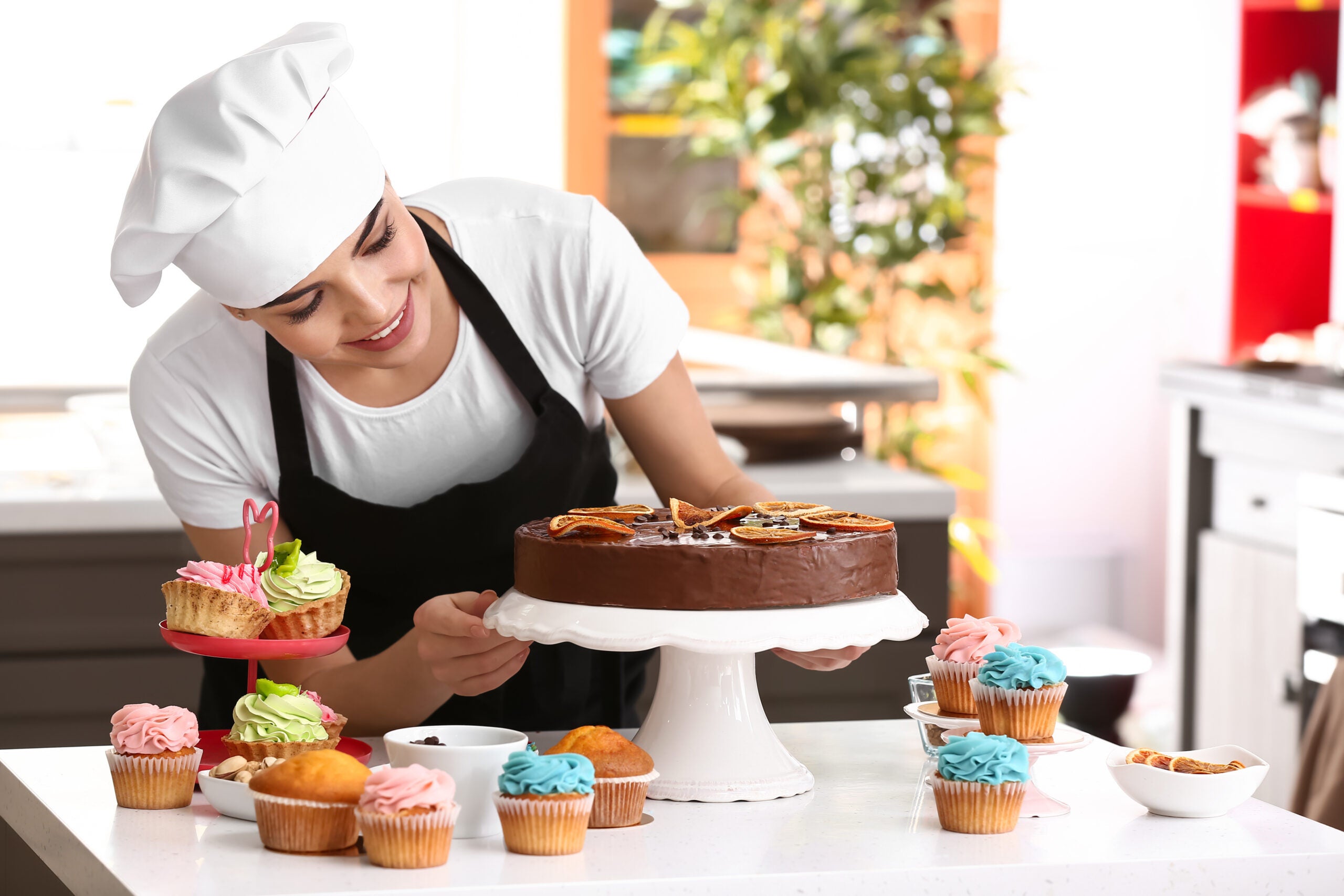Expand Your Cake Business: From Home Baking to Retail Success
By: Lynda Bekore

Starting a cake business from home is an exciting and rewarding endeavor. Many bakers begin by selling to neighbors, friends, or family, testing their skills and building a loyal customer base. But what if you want to take your cake business to the next level? Transitioning from home-based sales to a retail shop or expanding your offerings to partner with other businesses opens up a world of new possibilities. Let’s explore your options and potential challenges, step by step.
Step 1: Assessing Your Business Readiness
Before diving into a retail expansion, it’s important to assess your business. Are you consistently receiving orders, and is there increasing demand for your cakes? Have you developed a signature product or unique selling point (USP) that sets your cakes apart from competitors? If you answer yes, then you’re ready to consider expanding.
Step 2: Choosing Between a Retail Shop or a Kiosk
The first major decision is determining where to sell your cakes. Two common options are opening your own retail shop or renting a kiosk in a mall or marketplace. Each has its pros and cons.
Running a Retail Shop: Pros and Cons
Opening a standalone store offers more control and flexibility but also comes with greater responsibility and overhead. Some of the advantages include:
- Branding and Atmosphere: A physical shop allows you to create a strong brand identity. You can design the store to reflect your cake business’s personality, offering an inviting space for customers to admire and enjoy your cakes.
- Product Variety: With a retail shop, you have the space and opportunity to offer a broader variety of cakes and pastries. You can expand into complementary offerings like coffee, tea, or other baked goods.
- Customer Experience: Owning your shop allows you to control the entire customer experience, from greeting customers at the door to customizing cakes for special occasions.
However, there are also challenges:
- High Costs: Opening a store can be expensive, with significant upfront costs such as rent, utilities, equipment, and licenses. These costs can add up quickly and put pressure on your business to generate consistent sales.
- Location Risk: A poorly chosen location could mean insufficient foot traffic or being too far from your target audience, resulting in slow sales and difficulties building a customer base.
- Time and Commitment: Managing a store requires a significant time commitment. You may need to hire and train staff, manage inventory, and handle administrative tasks, which can divert your focus from actual cake-making.
Renting a Kiosk in a Mall: Pros and Cons
Alternatively, a kiosk in a mall or busy market may provide a more cost-effective entry into the retail world. Some benefits include:
- Lower Overhead: Kiosks are generally less expensive to rent and operate than a full-scale store, allowing you to save on costs like utilities and staffing.
- High Foot Traffic: Malls and markets provide high foot traffic, offering a steady stream of potential customers. Your cakes can appeal to shoppers who may stop for a quick snack or dessert.
- Flexibility: Kiosks can be rented on a short-term basis, making it easier to test the waters before committing to a permanent location.
On the downside:
- Limited Space: Kiosks offer much less space than a retail shop, restricting the number of cakes or products you can display and sell.
- Branding Limitations: Unlike a shop, where you can create an immersive brand experience, kiosks are often small and generic, making it harder to stand out.
- No Seating Area: Many kiosks don’t have space for customers to sit and enjoy their purchases, limiting the customer experience to takeout only.
Step 3: Expanding Beyond Retail
If you want to grow your business without investing in a physical store, consider alternative ways to expand. One option is to supply local restaurants or cafes with your cakes. Restaurants often need high-quality desserts, and becoming a supplier can provide you with a reliable stream of business without the costs associated with running a retail operation.
Another option is to partner with wedding and event venues. Wedding cakes are a lucrative market, and partnering with venues allows you to secure large, high-value orders. Developing relationships with event planners, hotels, and catering companies can help increase your visibility and boost orders for special events like birthdays, corporate events, and anniversaries.
Step 4: Marketing and Growing Your Customer Base
Whether you choose to open a retail shop, rent a kiosk, or partner with other businesses, marketing will play a critical role in your expansion. Use social media platforms like Instagram and Facebook to showcase your cakes, share customer testimonials, and announce new products. Engage with your followers by offering promotions, contests, or limited-time discounts.
Invest in a professional website where customers can learn more about your offerings and place orders online. Offering delivery services through apps like UberEats or DoorDash can expand your reach and make it easier for people to enjoy your cakes from the comfort of their homes.
Finally, remember the importance of word-of-mouth. Encourage happy customers to refer you to friends and family. You can also offer incentives, such as discounts for referrals, to motivate existing customers to spread the word.
Weighing Your Options
Growing your cake business beyond your home kitchen involves careful planning and decision-making. Opening a retail shop or renting a kiosk offers different benefits depending on your business goals, budget, and customer base. If a retail store feels too risky, consider expanding through partnerships with restaurants, cafes, or event venues. Each of these avenues offers a unique way to scale your business, build your brand, and reach new customers.
By weighing your options and choosing the path that fits your vision, you’ll be on your way to creating a thriving cake business that’s ready to serve an even wider audience.
993 Views












